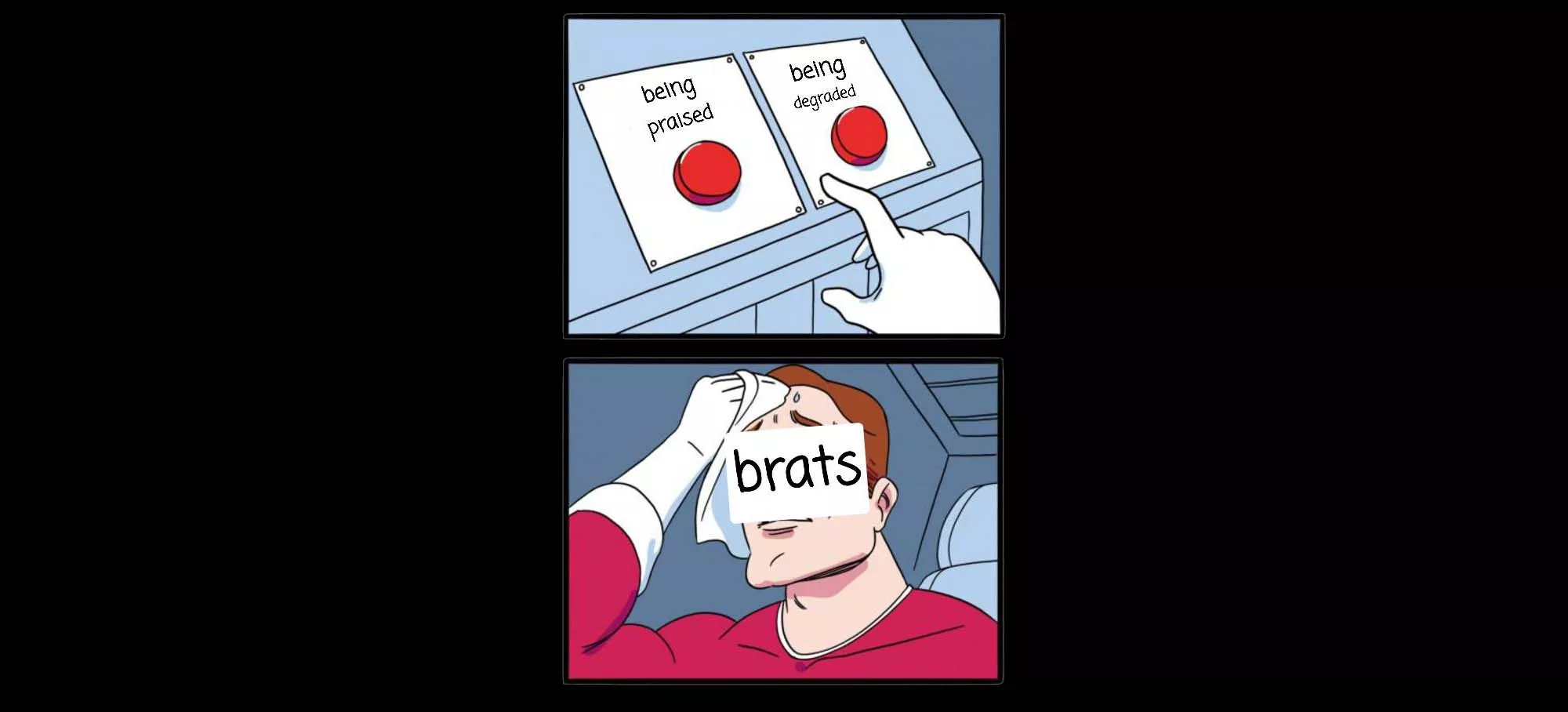In the world of kink and BDSM, there are numerous ways for individuals to explore their desires and preferences within intimate relationships. Two popular examples are brat kink and praise kink, which, while different in nature, both tap into the dynamics of power and affirmation. In this article, we will compare these two kinks, delving into their psychological underpinnings, their role in relationships, and how they cater to distinct yet equally valid desires.
Brat Kink: The Allure of Resistance and Power Play
Brat kink, also known as bratting, involves one partner (the “brat”) acting playfully disobedient, defiant, or teasing towards the other (the “dominant”). This behaviour is intended to provoke a reaction, often resulting in a power struggle and a subsequent assertion of dominance1. In essence, brat kink creates a push-pull dynamic that caters to the desire for power play and control, whilst still maintaining an element of fun and lightheartedness.
The appeal of brat kink can be linked to the psychological concept of reactance, which is the emotional response we experience when our perceived freedom is threatened2. In the context of brat kink, the act of resistance and defiance can be thrilling and satisfying for both partners, as it creates an opportunity for the dominant partner to assert their authority and the brat to test boundaries.
Praise Kink: Affirmation and Validation in Intimacy
Praise kink, on the other hand, revolves around the exchange of compliments, positive affirmations, and validation during intimate encounters. As discussed in a previous article, praise kink taps into our fundamental need for validation and acknowledgement, fostering emotional connections, boosting self-esteem, and enhancing trust in intimate relationships3.
One of the key differences between brat kink and praise kink is the focus on nurturing and affirmation rather than resistance and power play. Praise kink can be linked to attachment theory, with positive affirmations offering a sense of security and reassurance, reinforcing self-worth, and promoting emotional intimacy4.
While brat kink and praise kink may appear to be polar opposites, they both serve valid and unique desires within intimate relationships. Brat kink caters to those who enjoy power play, control, and the thrill of pushing boundaries, while praise kink offers a more nurturing and affirming experience, centred on validation and emotional connection. Ultimately, both kinks contribute to the rich tapestry of human sexuality and serve as a reminder that there are countless ways for individuals to explore and express their desires.
Footnotes / Sources
- [1]: Sprott, R. A., & Randall, A. (2019). Puppy play, brat play, and age play. In Consensual Non-Monogamy: Cultures, Theories, and Methods (pp. 155-163). Routledge. Available on Amazon
- [2]: Brehm, J. W. (1966). A theory of psychological reactance. Academic Press. Available on Amazon
- [3]: Maslow, A. H. (1943). A Theory of Human Motivation. Psychological Review, 50(4), 370-396. Article available on APA PsycNET
- [4]: Bowlby, J. (1969). Attachment and loss: Attachment (Vol. 1). Hogarth Press. Available on Amazon
